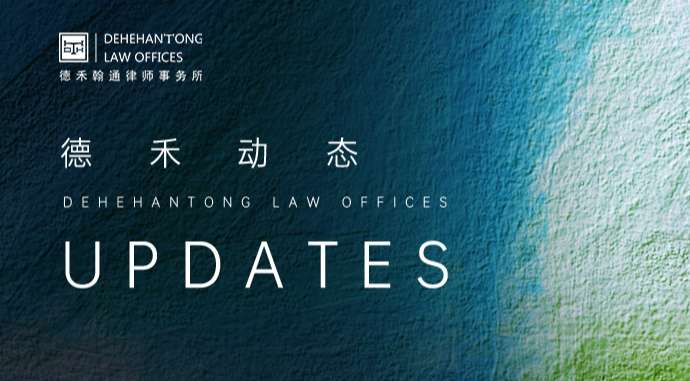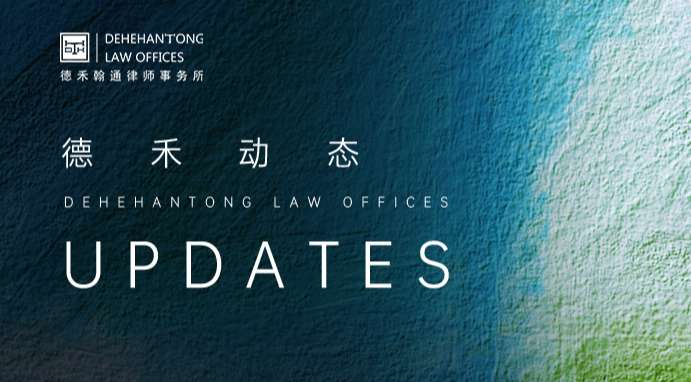Observation on the Resolution of Securities False Statement Disputes (Part One) - Judicial Dilemmas and Breakthroughs in Determining Lack of "Materiality": A Dual Perspective of Cases and Theory
On March 10, 2025, Zhou Lunjun, the deputy director of the Second Civil Division of the Supreme People's Court, pointed out in an interview that cases of false statements in stocks still account for the absolute majority of securities disputes, which means that cracking down on financial fraud has become an important aspect of court trial work. The Supreme People's Court pointed out that it will continue to refine the civil compensation system for false statements. For instance, by further clarifying the causal relationship, it aims to prevent civil compensation lawsuits from being distorted into an investor loss insurance system. It also emphasized that by strengthening the "gatekeeper" responsibilities of intermediary institutions, it will handle the dialectical relationship between the intensity of cracking down on illegal activities, the strength of protecting rights and interests, and the healthy development of the market. Similarly [1], the clarification and strengthening of the "materiality" requirement can also provide a strong guarantee for the healthy development of the capital market.
This article is the first in the series "Observation on the Resolution of Securities False Statement Disputes from Different Perspectives". It will combine similar case judgments and legal theories to explore the predicament and breakthroughs of securities false statements lacking "materiality" from the perspectives of the coexistence of dual standards and the independence of judicial review.
1.The dual interaction pattern of judicial practice and theoretical research
(1) Dual standards coexist at the normative level
Existing research shows that in the determination of the "materiality" of securities false statements in China, there exists a legislative mixed application of "investor decision-making criteria" and "price sensitivity criteria". The "Rational Investor Standard" originated from a precedent in American law. This standard holds that when a rational investor buys or sells securities, if they consider a certain fact to be significant, then that fact is considered material. The "Price sensitivity standard" holds that as long as a certain type of public information can affect the price of the securities market, then such information is considered material information.
Zhang Wenpeng (2024) pointed out through the normative analysis of the "Several Provisions of the Supreme People's Court on the Trial of Civil Compensation Cases for False Statements in the Securities Market" (Judicial Interpretation [2022] No. 2, Supreme People's Court, effective as of January 22, 2022, "Several Provisions") promulgated in 2022 that The element of "causing significant changes in the trading price or trading volume of securities" established in Article 10 [2] essentially constructs a determination system dominated by "price sensitivity". [3] Article 80 of the Securities Law of the People's Republic of China (Revised in 2019) (Order No. 37 of the President, Standing Committee of the National People's Congress, revised on December 28, 2019, effective as of March 1, 2020, "Securities Law") [4] Although the determination of major events adopts the description of price sensitivity by listing and "having a significant impact on trading prices", However, the investor decision-making criteria retained in Article 84 [5] still create institutional gaps.
Coincidentally, the data disclosed in the "White Paper on Securities Dispute Trials of Beijing Financial Court" released by the Beijing Financial Court in 2023 shows that among the securities false statement cases concluded in the jurisdiction over the past three years, 89.7% of the cases took the price-sensitive standard as the main basis for determination. [6]
This "dual coexistence" legislative model was concretely presented in the case of a certain holding company in Anhui Province [7]((2021) Hu 74 Min Chu X) - the company's three false statement acts all met the mandatory disclosure standard, but the court found through a penetrating review that: The stock price fluctuation ranges on the three information correction dates were -0.34%, +2.13% and +39.57% respectively, and the turnover rate did not exceed the benchmark line of 3%. Eventually, it was determined that it did not have "materiality".
It is worth noting that the "Administrative Measures for Information Disclosure of Listed Companies (Revised in 2021)" (Order No. 182 of the China Securities Regulatory Commission, revised on March 18, 2021, came into effect on May 1, 2021, and this document was revised on March 26, 2025) Article 12 [8], which will come into effect on July 1, 2025, clearly incorporates investors' decisions into the dimension of "materiality" judgment. This was innovatively applied in the case of a certain mining company in Tibet [9]((2023) Zang Min Zhong X) : When the court was reviewing the 1 billion yuan of related-party transactions involved in the case, it found that the funds were ultimately recovered in a closed loop in the form of creditor's rights transfer, and none of the key transaction nodes triggered the risk of stock pledge. Based on this, it was determined that the information disclosure defect "did not significantly change the risk-return calculation model of rational investors".
This legislative model of mixed use of "dual standards" not only increases the uncertainty in judicial practice, but also poses challenges to investor protection and the maintenance of market order. On the one hand, although the price sensitivity standard is highly operational, it overly relies on short-term fluctuations in market prices, which may lead to excessive tolerance for flaws in information disclosure. On the other hand, although the decision-making criteria of investors are closer to the core purpose of information disclosure, they are highly subjective and prone to cause inconsistency in judicial discretion. Therefore, how to strike a balance between the two standards has become the key to the further improvement of China's Securities Law.
(2) Practical Breakthroughs in the independence of Judicial Review
In recent years, beyond legal norms, some breakthroughs have been made in judicial practice regarding the criteria for determining "materiality".
Ye Ruizhen's (2023) systematic research indicates that, against the backdrop of the cancellation of the pre-procedure, the breakthrough review of administrative determinations by courts presents a "gradient" feature. [10] In typical cases that do not have "materiality", two major review paths are shown: One of them is the "market digestion defense" mechanism created in the case of a certain education company in Beijing [11]((2023) Jing 74 Min Chu X). The court compared the difference in turnover rate (Δ=2.3%) between the first false statement disclosure date and the current disclosure date, and combined it with the standard residual (SR=0.82) calculated by the event study method. It was determined that "the previous false statement had fully released the market risk". The second one is the case of a certain natural gas company in Xinjiang [12]((2024) Xin Min Zhong X). The occupation of 63.58% of the net assets in this case is a major event. However, considering the abnormal volatility indicator (IVX=12.7, industry average 15.3) and the β coefficient deviation (Δ=0.11), The court innovatively introduced the theory of "market reaction passivation" to exclude it.
Furthermore, by integrating the two major review paths, in the case of a certain department store in Xinjiang [13](Xin Min Zhong X No. (2022)), the defendant successfully denied the necessity of determining "materiality" through the dual evidence chain of "no substantial fluctuation in stock price after the exposure of false statements + stable turnover rate level" (the average turnover rate from the exposure date to the base date was only 5.32%) (Zhang Wenpeng, (2024)
With the increase in the complexity of the securities market and the rise in the demand for investor protection, future judicial practice may need to further optimize the review mechanism in the determination of "materiality". On the one hand, more refined market response assessment tools can be introduced. For instance, by integrating big data analysis and artificial intelligence technologies, the market impact of false statements can be dynamically tracked and quantitatively analyzed. This can not only enhance the scientific nature of judicial review, but also reduce the risk of misjudgment caused by a single indicator. On the other hand, regarding the application of the theories of "market digestion defense" and "market reaction passivation", judicial interpretations should further clarify their scope and conditions of application. For instance, the "market digestion defense" should be limited to repetitive disclosures of false statements only, while "market reaction passivation" requires differentiated judgment based on industry characteristics.
In contrast, Lin Wenxue, the director of the Second Civil Division of the Supreme People's Court, emphasized at the 2023 Financial Trial Work Conference: "Judicial review should not only respect the professionalism of regulation but also adhere to the independence of legal judgment." For cases of abnormal and missing market responses verified through big data, a substantive review mechanism should be established. This important judicial policy orientation has been implemented in the case of a certain technology company in Guangdong [14]((2022) Yue Min Zhong X) : In this case, the court adopted the analysis of high-frequency trading data at the minute level and found that abnormal fluctuations began to occur only on the 31st transaction after the correction announcement was released, and this time window had exceeded the period during which the securities false statement behavior was effective. Thus, the judgment principle of "strict correspondence of time series" was established. In the future, a standardized "time window" assessment mechanism can be established to clarify the temporal correlation between false statement behavior and market response, avoiding determination deviations caused by time lag. For instance, the high-frequency trading data within 30 minutes to 2 hours after the release of the correction announcement can be set as the key observation window. If no significant fluctuations occur during this period, the materiality can be initially ruled out.
Although the current judicial practice has initially formed innovative paths such as "market digestion defense" and "market reaction passivation" in the determination of "materiality", the fragmented review standards are still difficult to cope with the dual challenges of the complexity of the securities market and the demand for investor protection. For instance, in the case of a certain education company in Beijing, the combination of the turnover rate difference and residual analysis can explain the risk release mechanism, but it is difficult to quantify the threshold of market passivation. The β coefficient deviation model of a certain natural gas company case in Xinjiang also lacks universality for cross-industry application. Although the principle of "strict correspondence of time series" proposed by the Supreme People's Court has strengthened the review of causal relationships, it has failed to solve the problem of quantitative determination of false statements and market fluctuations. The inconsistency between judicial efficiency and judgment standards has led to the average trial period of cases still reaching over 180 days, and the rate of acceptance of judgments and cessation of litigation is less than 75%(Zhang Wenpeng, 2024). To this end, we will continue to explore solutions from a systematic perspective. Through progressive research from empirical verification to institutional design, a securities false statement judgment system that takes into account both efficiency and fairness can be constructed, providing scientific support for the legalization of China's capital market.
2. Empirical testing of systematic solutions
(1) Case mapping of the "quantitative priority" standard
The operational guidelines established in the case of a certain energy company in Zhejiang Province are exemplary: The court parameterized the market effect of financial data using the modified Ohlson model and set four quantitative standards: (1) The excess turnover rate Δ during the information disclosure window period ≥3%; (2) The volatility of individual stocks exceeds the industry benchmark by 1.5 times; (3) Reverse screening of transaction flow data (the proportion of instant sell orders exceeds the 75% threshold); (4) The GJR-GARCH model verifies the fluctuation agglomeration effect. Such models have achieved remarkable results in practical tests - the average trial period for securities cases in Jinhua area has been shortened by 38 days, and the rate of acceptance of judgments and cessation of litigation has increased by 22 percentage points (Zheng Xintong, 2023). [15]
(2) Institutional construction of professional judicial capacity
The "White Paper on Securities Dispute Trials of the Beijing Financial Court" by the Beijing Financial Court proposes three paths for the construction of capabilities: At the level of evidence rule innovation, the high-frequency data collection norms established in the case of a certain supply chain company in Xinjiang (extracting 10 pieces of market data per second) can be adopted; At the expert assistant system level, the "double-blind review" mechanism created by a certain technology company in Jiangxi Province can be upgraded. In terms of differentiated handling solutions for similar cases, it is possible to consider achieving intelligent diversion through the "signal strength - market absorption" matrix. Jiang Qibo, director of the Research Office of the Supreme People's Court, pointed out at the Securities Law Forum: "It is necessary to strengthen the construction of data sharing channels for financial trials and financial supervision, and explore a dynamic calibration mechanism between judicial review standards and administrative penalty standards."
(3) Exploration of the Localized Rational Investor Model
In current judicial practice in China, the criteria for determining the "materiality" of false statements are deeply coupled with the "Layered Protection Theory for Informed Traders" proposed by Zhang Ao (2022) [16], forming a dynamic judgment logic oriented towards the substantive influence of the market. This theory advocates the hierarchical establishment of protection mechanisms based on the differences in investors' information processing capabilities, which is reflected in judicial practice as the refined review of market responses. Traditional judgments often rely on administrative penalties or financial proportion thresholds to infer "materiality". For instance, in the case of a certain department store in Xinjiang, although the fictitious transaction amount reached 296 million yuan, all the funds had been fully returned and there was no significant fluctuation in the stock price. Therefore, the court determined that it did not have "materiality". This reflects that judicial practice holds that informed traders have priced the value of information through market behavior. The fact that no abnormal fluctuations have been triggered indicates that professional investors have not developed information dependence, and thus ordinary investors do not require special protection. For instance, in the case of a certain holding company in Anhui Province, the court used the event study method to separate macro factors such as stock market crashes and industry cycles, and determined that if the contribution of false statements to the stock price was less than 20%, it did not have "materiality". This quantitative analysis essentially adopts the market judgment logic of informed traders. In other words, when professional investors attribute stock price fluctuations to systematic risks rather than specific information, the judicial system excludes civil liability to avoid excessive relief for uninformed traders.
3. Conclusion
Liu Guixiang, a member of the Judicial Committee of the Supreme People's Court, pointed out: "The governance of false statements in securities needs to build a dual-core driving system of 'legal logic + financial technology'. It is necessary to adhere to the underlying logic of the tort liability law while innovatively applying big data analysis technology." With the advancement of the "Three-Year Action Plan for Intelligent Trial" by the Beijing Financial Court, establishing a "materiality" determination system based on market influence, dominated by quantitative analysis, and supported by intelligent supervision will become the development direction. This is not only a judicial response to the requirements of the registration-based reform, but also an institutional innovation to achieve a dynamic balance between investor protection and the efficiency of the capital market. The second part of "Observation on the Resolution of Securities False Statement Disputes" will continue to discuss with you the practical predicaments and improvement paths in the determination of "materiality". Please stay tuned.
Footnote:
[1] "Exclusive Interview with Zhou Lunjun, Deputy Director of the Civil Division II of the Supreme People's Court by China Business News: Multiple judicial rules and interpretations in the financial and securities fields will be introduced and improved."
[2] Article 10 Where any of the following circumstances exists, the people's court shall determine that the content of the false statement is material:
(1) The content of the false statement falls within the category of major events as stipulated in Article 80, Paragraph 2 and Article 81, Paragraph 2 of the Securities Law;
(2) The content of the false statement falls within the category of major events or important matters that are required to be disclosed as stipulated in the rules and regulations and normative documents formulated by the regulatory authorities;
(3) The implementation, disclosure or correction of the false statement leads to a significant change in the trading price or trading volume of the relevant securities.
Where the defendant submits evidence sufficient to prove that the false statement has not led to a significant change in the trading price or trading volume of the relevant securities in the circumstances listed in Paragraph 1, Items (1) and (2), the people's court shall determine that the content of the false statement is not material.
Where the defendant can prove that the false statement is not material and uses this as a defense to claim that it should not bear civil liability, the people's court shall support such defense.
[3] Zhang Wenpeng. Deconstruction of the Dual Model for Determining Materiality under the Registration System [J]. Legal Research, 2024.
[4] Article 80 Where a major event occurs that may have a significant impact on the trading price of the stocks of a listed company or a company whose stocks are traded on other national securities trading venues approved by the State Council, and investors have not yet been informed of such event, the company shall immediately submit a temporary report on the relevant major event to the securities regulatory authority under the State Council and the securities trading venue, and make an announcement, explaining the cause of the event, its current status and the possible legal consequences.
The major events referred to in the preceding paragraph include:
(1) Major changes in the company's business policy and scope of operations;
(2) Major investment activities of the company, including the purchase or sale of major assets within one year exceeding 30% of the company's total assets, or the mortgage, pledge, sale or scrapping of the company's main operating assets at one time exceeding 30% of such assets;
(3) The company entering into important contracts, providing significant guarantees or engaging in related-party transactions that may have a significant impact on the company's assets, liabilities, equity and operating results;
(4) The company incurring major debts or defaulting on major debts that have become due;
(5) The company suffering major losses or significant damages;
(6) Major changes in the external conditions affecting the company's production and operation;
(7) Changes in the company's directors, more than one-third of the supervisors or the manager, or the inability of the chairman or the manager to perform their duties;
(8) Significant changes in the shareholding or control of the company by shareholders holding more than 5% of the company's shares or the actual controller, or significant changes in the actual controller's control of other enterprises engaged in the same or similar business as the company;
(9) The company's plans for dividend distribution or capital increase, significant changes in the company's equity structure, decisions on the company's capital reduction, merger, division, dissolution or application for bankruptcy, or the company's entry into bankruptcy proceedings or being ordered to close down;
(10) Major lawsuits or arbitrations involving the company, or the revocation or declaration of invalidity of resolutions of the shareholders' meeting or the board of directors;
(11) The company being investigated for suspected criminal activities, or the company's controlling shareholders, actual controllers, directors, supervisors or senior management personnel being subject to compulsory measures for suspected criminal activities;
(12) Other matters as prescribed by the securities regulatory authority under the State Council.
If the controlling shareholder or actual controller of the company has a significant impact on the occurrence or progress of a major event, they shall promptly inform the company in writing of the relevant circumstances they are aware of and cooperate with the company in fulfilling its information disclosure obligations.
[5] Article 84 Except for the information that is required to be disclosed by law, the information disclosure obligor may voluntarily disclose information related to the value judgment and investment decision made by investors, but such information shall not conflict with the information disclosed by law and shall not mislead investors.
Where the issuer and its controlling shareholders, actual controllers, directors, supervisors, senior management personnel, etc. make public commitments, such commitments shall be disclosed. Where failure to fulfill such commitments causes losses to investors, they shall bear the liability for compensation in accordance with the law.
[6] "Four Years of Trial Practice: The 'White Paper on Securities Dispute Trials' Reveals: Financial Fraud, False Information Disclosure, Concealment of Related Party Transactions..." 。
[7] (2021) Shanghai No. X Civil Case of the 74th People's Court. The case of Anhui Certain Holding Company was judged in May 2022.
[8] Article 12 The regular reports that listed companies shall disclose include annual reports and interim reports. All information that has a significant impact on investors' value judgments and investment decisions shall be disclosed.
The financial accounting report in the annual report shall be audited by an accounting firm that complies with the provisions of the Securities Law.
[9] (2023) Tibet Civil Final X No. Case of a certain mining company in Tibet. Judged in November 2022.
[10] Ye Ruizhen. Research on the Synergistic Mechanism of Administrative and Judicial Procedures [J]. Modern Law Science, 2023.
[11] (2023) Jing 74 Min Chu X No. Beijing Education Company Case. Judgement made in January 2024.
[12] (2024) Xinmin Intermediate Court Case No. X - Xinjiang Natural Gas Company Case - Judged in August 2024.
[13] (Civil Appeal No. X of Xinmin, 2022) Xinjiang Department Store Company Case, Judged in February 2022.
[14] (2021) Yue Min Zhong X No. Guangdong Certain Technology Company Case. Judgement made in June 2023.
[15] Zheng Xintong. Construction of a Localized Rational Investor Model [J]. Securities Law Review, 2023.
[16] Zhang Ao. The Shift of the Price Sensitivity Standard to Judicial Discretion [J]. Financial Law Review, 2022 (4).
-
Prev:A Brief Analysis of Relevant Legal Issues of Overseas Direct Investment: Taking the Acquisition of a Certain Overseas Enterprise Project as an Example
-
Next:Interview with a Figure | At the Intersection of Rationality and Sensibility, Writing the Warm Footnote of the Rule of Law - Lawyer Xue Jie
Recommended Information
-
UpdatesDehehantong and School of International Education of East China University of Political Science and Law jointly carry out foreign student exchange visit activities2025-04-15
-
Updates2025 Dehehantong "Young Eagle Project"the fourth phase is about to set sail: with law as the wing, to the starlight2025-04-15
-
ArticlesInterview with a Figure | At the Intersection of Rationality and Sensibility, Writing the Warm Footnote of the Rule of Law - Lawyer Xue Jie2025-04-15
-
ArticlesBankruptcy Reorganization: Challenges and Hopes on the Road to Revival for Distressed Enterprises2025-04-11
-
UpdatesDehehantong helped the country's first Yangtze River Delta integrated carbon neutral dual-theme green corporate bond to be successfully issued2025-04-11















